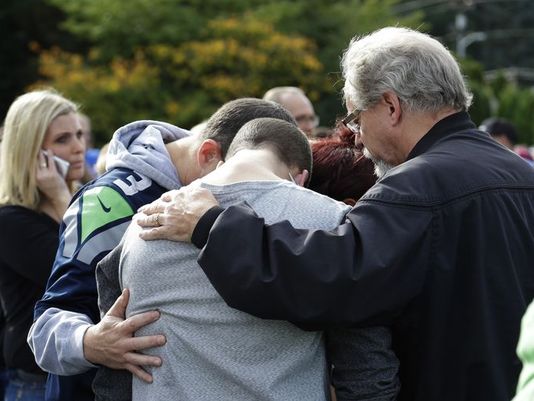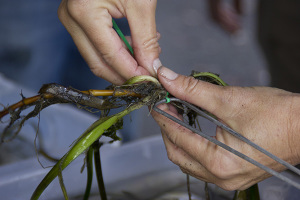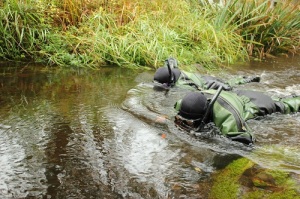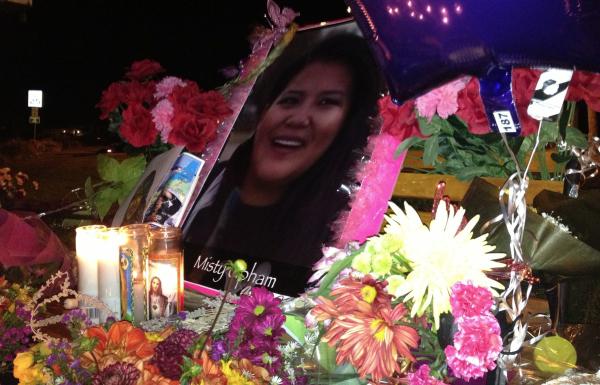
By Alison Morrow, King 5 News
MARYSVILLE, Wash. — A student walked into his Seattle-area high school cafeteria on Friday and without saying a word opened fire, killing one person and shooting several others in the head before turning the gun on himself, officials and witnesses said.
Two people were found dead, including the male shooter and a female victim, inside the school north of Seattle. Three other students were critically injured and the shooter, a student at the school, killed himself, according to police, student and hospital reports.
RELATED: Police: Cafeteria worker tried to stop Marysville-Pilchuck shooter
The shooter is freshman Jaylen Fryberg, according to students and his family members. Marysville Police Commander Robb Lamoureux would not confirm whether the second person killed was a student or not.
Three of the victims had head wounds and were in critical condition. Two young women were taken to Providence Everett Medical Center.
A 15-year-old boy, Andrew Fryberg, was at Harborview Medical Center in Seattle in critical condition, hospital officials said.
RELATED: Four shot treated at Providence, Harborview
Another victim, 14-year-old Nate Hatch, was listed in serious condition at Harborview as well, the hospital said.
There were no other shooters on campus. Police completed a sweep of the school, Marysville Police Commander Robb Lamoureux said.
The shooting took place at 10:39 a.m. Friday, according to Marysville Police.
Police set up a transfer location at Shoultes Community Church where parents were instructed to meet their children.
The district sent out an automated phone call to parents telling them where to meet their kids.
RELATED: More than 1,000 attend vigil following school shooting
Austin Taylor said he was sitting about 10 feet from the shooter inside the cafeteria.
“I was sitting at the table right next to the round table (where the shooter was). I just got done eating my food. He was quiet, everyone was talking. All of sudden he stands up, pulls something out of his pocket. At first I thought it was someone making a really loud noise like a bag, a loud pop. There were four more after that. I saw three kids just fall from the table, like they were falling to the ground dead. I jumped under the table as fast as I could. When it stopped, I got back up and saw he was trying to reload his gun. And when that happened, I just ran in the opposite direction and I was out of there as fast as I could.”
Another student described his experience on campus following the incident.
“We all heard the fire alarm. We didn’t hear any gunshots because we were so far away,” said Bryce Vitcovitch, student. “We all started to evacuate into the field. Right when we got to the field, a teacher came running out obviously in a hurry and he was yelling to go back into the classrooms…We got into the classrooms immediately and from there rumors started flying.”
The Marysville-Pilchuck football coach said he was not at school, but checked in with his players by text.
“I’m just making sure my kids are safe,” Coach Brandon Carson said. “I don’t know if any players are involved. I have checked in with a few, and I have talked with a handful of kids.
“They said there’s a shooter in the lunchroom and that’s all I know.”
Di Andres, whose 17-year-old son is a student, said her son texted her about the shooting.
“He said that the school has been in lockdown and he’s been hiding in a closet in a classroom with some classmates,” said Andres. “As far as we know, he’s okay and safe with those other classmates.”
Governor Jay Inslee was briefed about the shooting.
A statement from his office said that he “like everybody is keeping these students and families in his prayers.”
President Obama was also briefed, according to a tweet from NBC Nightly News.
The Snohomish County Sheriff’s Office is assisting Marysville Police in the investigation.
FBI spokeswoman Ayn Dietrich said the agency was also assisting and providing specialists to work with victims and their families.
Marysville-Pilchuck High School has many students from the Tulalip Indian tribe. State Sen. John McCoy, a tribal member, said the shooting had devastated the community.
“We’re all related in one shape or form. We live and work and play together,” he said.
Classes were canceled for the week of Oct. 27, according to the Marysville School District. Counselors will be available Friday from 6pm to 8pm and Saturday from 9 a.m. to 12 p.m. at 4220 80th St. NE in Marysville.
A prayer vigil was planned for 6:30 p.m. Friday at The Grove Church, according to Pastor Andrew Munoz. Gov. Jay Inslee was among those in attendance.
Elizabeth Wiley and Susan Wyatt contributed to this report.










